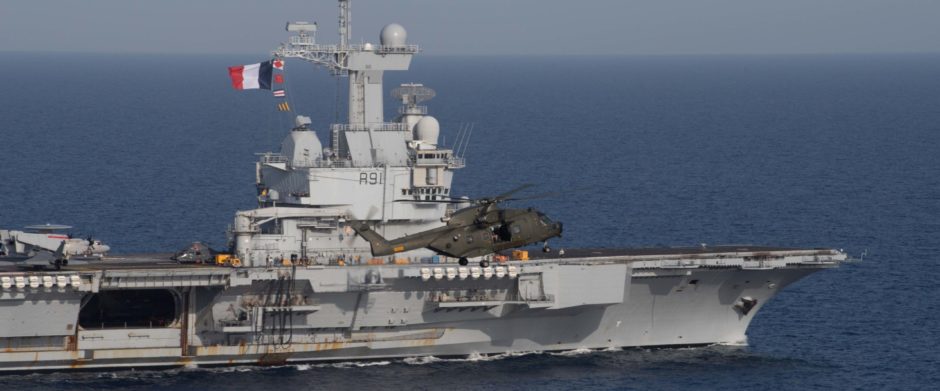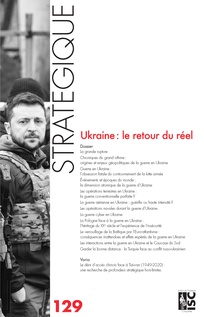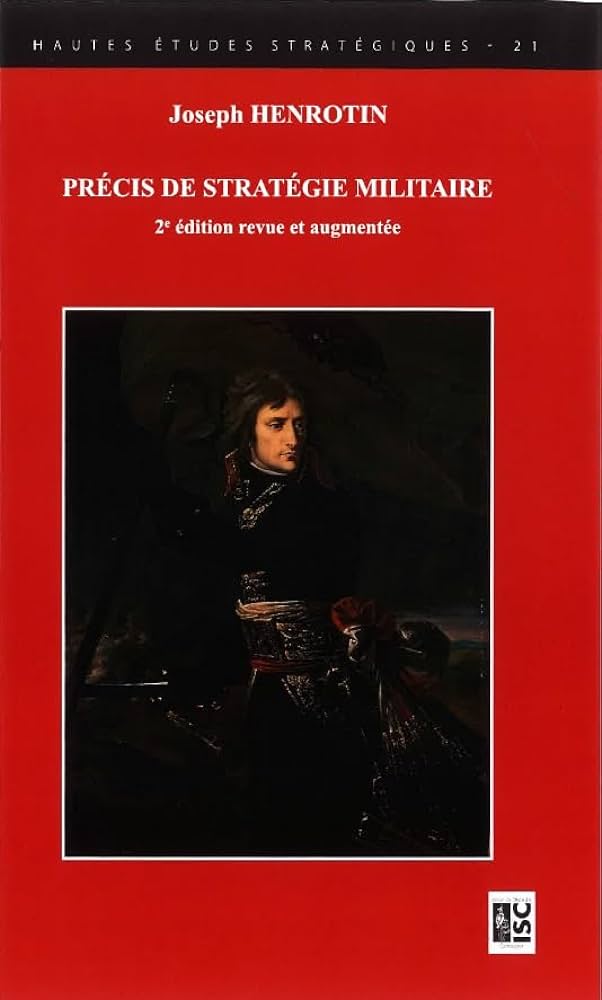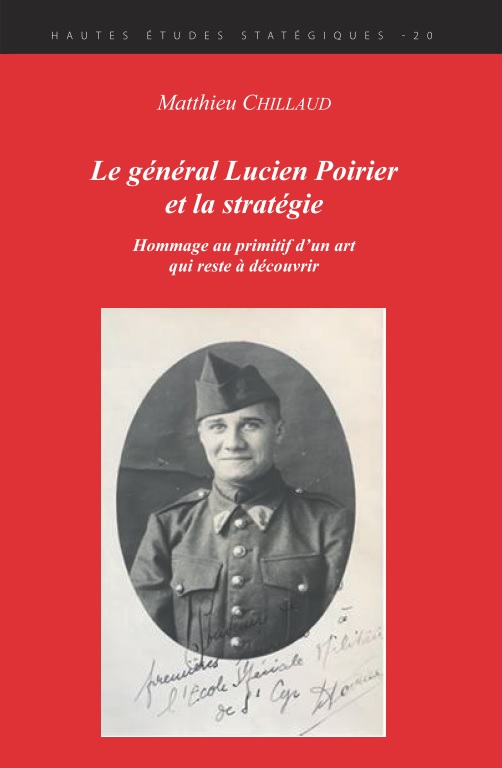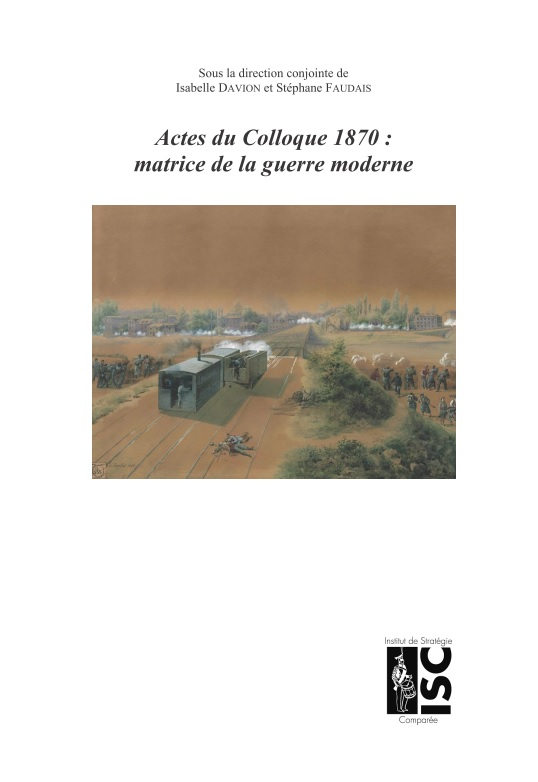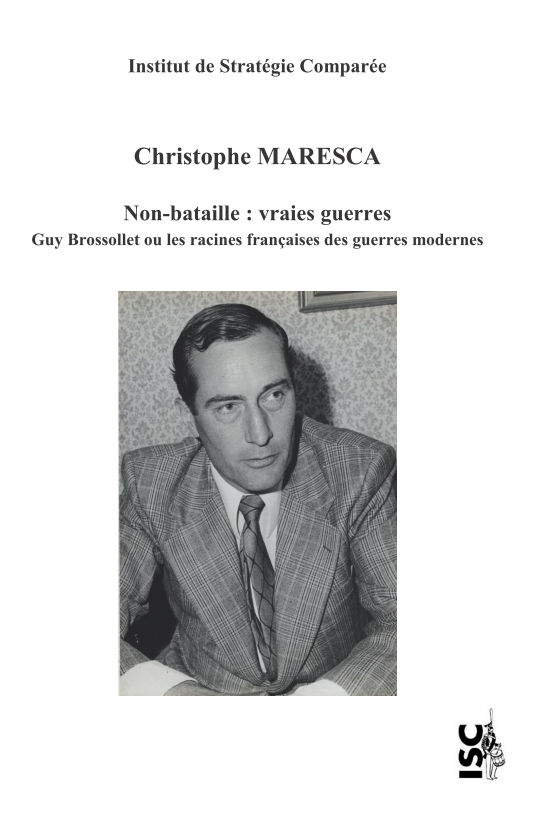Perhaps one of the greatest factors that affected the Lafayette Escadrille and its long-term reputation was its dealings with the USAS during World War I. America and the USAS was woefully unprepared when it entered the Great War; its preparations were marred by indecision, unreal expectations, a general lack of proper planning, and failure to appreciate the lessons already learned by the Allies. It also greatly mismanaged the transition of the Lafayette Escadrille and failed to capitalize on the value of the squadron. Some of the men of Lafayette Escadrille would choose to stay with French due to the treatment they received; some became disheartened and lost all hope and patience with the fumbling USAS. Whatever the case, the USAS failed to properly integrate the Lafayette Escadrille and shunned them, a miscue that would irreparably harm the reputation of the Escadrille.
The USAS’s Early Lack of Preparation
At the start of the war in August 1914, Germany had 232 aircraft, Russia 190, France 162, and Great Britain, Italy, and Austria-Hungary around 50 to 100 each. Belgium possessed sixteen aircraft. Each country had a few balloons and dirigibles. At the time, the U. S. Army had eight aircraft. 1
As the war dragged on and the countries geared up their industrial bases, innovation and necessity led to the production of hundreds and thousands of planes. The leap in the technology and lethality of the aircraft between 1914 and 1918 was impressive.
The amount of American aviation assets would be poor in comparison with the allies, and, in fact, it never caught up during the war. As late as 1913, aviation was still part of the Army’s Air Arm Signal Corps (the precursor to the USAS) since it was considered as “an information gathering platform” and for the “immediate future ninety-nine per cent of its value would be in the sense of information.” 2
In December 1914, in Congressional Hearings before the Committee on Military Affairs to determine the Army Appropriation Bill for 1915 and 1916, General Scrivner, the chief of the Signal Corps, and thus in charge of the Air Service at the time, described the aviation situation in the ongoing war in Europe. At this point, he said, the French had 500 aircraft, the Russians 500, the British 250, Germany 500, Austria 100, and Italy 150. The General went onto describe the successful use of aircraft in the war, emphasizing observation and not the other facets of aviation’s future. His request for one million dollars in funding was rejected and he was given much less. The USAS possessed eleven at this time; General Scrivner wanted to procure 48 aircraft. It was obvious from the General’s testimony, and even more so from the Congressmen’s reactions, that the US was failing to grasp the importance of aviation. In that same meeting in December, the Committee members had also derided the advent of the airplane as “largely responsible for the indecisiveness of the battles raging in northern Europe,” and that “aero planes were a distinct disappointment to those who believed that aircraft would play an important role in the war.” Furthermore, the only “distinction they have accomplished is that of terrifying helpless women and children.” 3
If one continues to read the records of Congressional Meetings and Hearings from this pre-war period, it is evident that at the start the American Congress and the Army did not understand what was happening in aviation in Europe – thus America would continue to fall behind the rest of the belligerents. In July 1916, in testimony before Congress, General Scrivner would again ask for an increase in aircraft – this time requesting eighteen squadrons composed of 432 aircraft. Still, even these numbers were comparatively low, and failed to compete with the rapidly increasing aviation forces overseas. At the time this request was put to Congress in 1916, only 23 aircraft existed in the USAS. 4
In Washington, D. C., the Air Arm of the Signal Corps was being run by a few ex-cavalrymen, engineers, and administration officials. These men still lived in an era of telegraph wires, semaphore flags, and heliograph instruments; they believed that aircraft were unnecessary to carry out aerial observation. Some even thought that aircraft were too noisy and that kite balloons were preferable since they were silent and could be flown in any weather, day or night! Three years of savage fighting had not impressed upon these men the changing nature of warfare and technology. 5
Declaration of War
When America declared war on April 6, 1917, the entire American Army, and especially the newly formed USAS, was in a state of disarray. The very Congressmen that had held back the development of the Air Service and the rest of the Army now sought to redress the glaring deficiencies in training and material.
At the declaration of war, there totaled only 200,000 men in the U. S. Army. Worse, there were only 131 officers and 1,087 enlisted in the USAS; and though it had added a few planes, the total number was still less than 250, most of which were completely obsolete — not one worthy of combat. 6 Congress swung into action and sought to make up for years of inactivity and stringent funding. An even greater exterior impetus was received when a cable from the French Government arrived, requesting that the U. S. to furnish up to 4,500 aircraft as soon as possible — at least by 1918 — to include the requisite equipment and personnel. The Joint Army-Navy Technical Aircraft Board quickly translated this request into a plan of action, and even optimistically increased the numbers, assuming that they could produce 12,000 aircraft by early 1918. This was called the “12,000-Plane Program”, which included plans for an additional 5,000 training aircraft. An equally optimistic Congress accepted this plan, and accorded an appropriation of $640,000,000 dollars, an extraordinary sum and the largest single one ever passed by Congress on a single issue to date. President Woodrow Wilson signed the bill on July 24, 1917. 7
Even the President was overly confident that the rapid infusion of cash would make a miracle Air Service appear where there had been none before. In a letter to Secretary of War Newton Baker, Woodrow Wilson wrote, “The total amount proposed is $640,000,000…this effort will lead to the immediate and effective speeding up of our war effort in air activity.” 8 Congress promised to “darken the skies over Germany with American-made aircraft, manned by American-trained pilots.” The $64 million dollar appropriation accounted for the eventual construction of 22,625 aircraft (four times the number of aircraft at the time in service with the French, British, and Italian air services) and 44,000 engines. They believed that the largest appropriation in American history was going to elevate it to the world’s leading air power. 9
Others were skeptical. General Pershing of the American Expeditionary Force (AEF) commented on the status of the USAS in late 1917: “The Army should be mortified. Out of the 65 officers and the 1,000 men in the Air Service Section of the Signal Corps, there were 35 officers who could fly…with the exception of five or six officers, none of them could have met the requirements for modern battle.” 10 Billy Mitchell, the father of the modern USAF, was even more blunt during his brief exploration trip to France to evaluate the status of Allied air services in 1917, “Our air force consists of one Nieuport, which I used myself, and that is all.” 11
As expected, and quite rapidly, reality hit the well-intentioned Americans. The industrial base to support the building of aircraft was nonexistent, and training could not support the large numbers of pilots that were planned for; in short, the Americans now realized that they were way behind the other belligerents. The shortage of men, training, and materiel constituted the most serious deficiency that the Air Service faced in its race to complete its plans. It became quickly apparent that the facilities did not exist nor the time to correctly train this vast number of personnel. The Americans were forced to turn to France for these express purposes. 12 The known lack of infrastructure and other support materiel made it highly unlikely that the Americans could train more than 500 pilots before June 1, 1918, and then with only a bare minimum of advanced training. To meet the immediate needs the French offered the Issoudun air training facility, and during the latter part of July 1917, authorization for American personnel to begin flight training. Another already operational school in Tours was given to the Americans for training in November 1917. 13
Of the original 65 flying officers of the USAS only a few had seen combat in Mexico; the rest of them were recent graduates of flight training themselves. There was certainly “no officer qualified by training or exposure to take charge of the higher levels of aviation instruction, and the officers assigned to special instruction knew little or nothing of the subjects they were called upon to teach.” 14 At the time, Colonel Mitchell expressed his reservations and frustrations very bluntly, “The General Staff is now trying to run the Air Service with about as much knowledge of it as a hog knows of skating.”15 He was not far off. He had come over earlier than the AEF on a fact-finding mission to evaluate the status of the Allied air services. He was amazed at the advancement of the allied airplanes. 16 Yet still, the Americans stubbornly wanted to produce their own war machines. Instead of taking the blueprints of aircraft that existed and modifying them, they tried to develop their own “Liberty Aircraft” with its own “Liberty Engine.” The first result of their efforts was a catastrophe and was dubbed the “Flying Coffin.” It never flew in combat. 17
In 1918, America gave up hope and bought every available French Nieuport it could find. Despite the 640 million dollar infusion of money in 1917, by 6 April 1918, America still had no completely operational wholly American unit, no American plane of its own, and no American engine. 18 And what of the 12000-Plane Program and the budgeted for 22,625 aircraft? By the armistice, the Americans had only built 196 airplanes of their own. 19
It is with this scenario of miscues in mind that the attention is turned to the integration of the Lafayette Escadrille.
The Transfer of the Lafayette Escadrille
If the efforts of the USAS to catch up to its allies were clumsy, whimsical, and inefficient, then the transfer and integration of the Lafayette Escadrille into the USAS could only be described as criminal. One historian put it thusly, « The transfer of the Lafayette Escadrille to the American Air Service in early 1918 (was) a graphic illustration of the chaos and turmoil that accompanied the American efforts to suddenly change an insignificant section of the Signal Corps into an armada of gigantic proportions.” 20
Billy Mitchell had seen the value of the Lafayette Escadrille men immediately. He knew that the Lafayette Escadrille men and the other men flying with French in other squadrons could furnish a wealth of American experience and technical capability. He wrote numerous letters urging that the Lafayette Flying Corps men be granted to his jurisdiction for immediate inclusion into the AEF; but Mitchell was a colonel without a command in Europe and the higher-ups back home refused to listen to him. The effort, according to the generals back home, was to be an all-American one; they did not need men who had served for another country. The way they had figured it, they had plenty of time on their side, and besides, American know-how and moxie would make up for all of the differences. It was as if the American pilots of the Lafayette were tainted in some fashion and the USAS did not want to touch them. 21
* * *
The future of the Lafayette Escadrille was already being discussed by the French. Once America declared war, the French became eager to get the Americans out of French uniform and into American ones for reasons of diplomacy and morale. On the very day that the Americans declared war, the French Ambassador to America, Jules Jusserand, cabled a report that the Lafayette Escadrille was to be transferred as soon as possible. “It is of great importance that the American flag be engaged in the conflict without delay,” he wrote. 22 Almost immediately, the French Ministry of War, thinking it was the Americans that had given the Ambassador the idea, agreed with the suggestion and forwarded its approval back to the United States. In an official declaration, it was decided, “That henceforth, from this day forward, all flying and non-flying personnel attached to the Lafayette Escadrille will fight in the uniform and under the flag of the Unites States.” 23 The French, again thinking that they were doing the American’s bidding, also notified the press and decreed that on April 11, 1917, the American pilots of the Lafayette Escadrille would soon be part of the American Army. These French actions were in turn brought to the attention of the U. S. War Department. Secretary of War Baker sidestepped the issue by saying that though he had not officially sanctioned the plan, he would do nothing to oppose it. He released a communiqué, stating that the Lafayette Escadrille would not be brought home to become part of the U. S. military since it was doing much more important work at the front. He had washed his hands of the squadron; however, nobody bothered to contact the men directly to let them know what was in store. 24
The Lafayette Escadrille men, receiving the order from the French and hearing in the press that they were to be released immediately, rebelled. Captain Thenault wrote an official response on behalf of the men, asking if anybody higher up had even thought of the ramifications of this order. To whom would they be released? How would they be released? Sure, these men had taken an oath to follow the rules of the French Army, would they be officially sworn out? What about questions of pay, uniforms, and ranks? Who would provide them? How would they receive commissions in the USAS? Who would take their place in the front lines?
The squadron would have to obviously remain intact as a unit until someone figured out these all of these details. Captain Thenault and the men offered valid opposition, so much so that the leadership acquiesced; the rush to transfer the Lafayette men would have to wait until there was a better plan. 25
The men of the Lafayette Escadrille, although happy that America had declared war, were very disturbed about their unit disposition. Indecision and lack of information create morale issues. In times of uncertainty, rumors and suspicion become rampant, and the men of the Lafayette Escadrille were no different. The men became frustrated with the indecision and hesitation. It seemed that nobody wanted them or had a plan for them. They knew that the talk of “12,000 planes and the darkening of the skies of Germany” was much hype. They could not help but feel left out of the grand plan; that they were not part of the swell of appreciation and excitement that emanated from America. Edwin Parsons explained the Lafayette sentiment perfectly,
“Unfortunate and untimely propaganda claimed that the US had hundreds of pilots and thousands of planes nearly completed. Bitter experience made us a little skeptical of the last statement. However, it seemed that, with such magnificent preparations, they had no need for us who had been carrying the burden. It cut us all pretty deeply, for we began to feel like we were partially outcast; men without a country.” 26
Commandant Fequant, the Groupe de Combat 13 Commander and higher headquarters commander then in charge of the Lafayette Escadrille, wrote in September of 1917 that the men of the Escadrille were subject to a “certain ill air,” and “whereas the Lafayette pilots once incited each other in their endeavors to maintain at a high level the reputation of the unit, a certain number had now lost interest. Only the better ones continued to be urged by the noble sentiment of the past.” He even recommended disbanding the unit immediately and farming the pilots out to French Escadrilles in order to save it from itself. 27
Dr. Edmund Gros, who had been granted a commission as a major in the USAS and who still considered himself the director and leader of the men in the Lafayette Flying Corps and the Escadrille, even misjudged the situation. Pressured by the French to see if the men of the unit would accept commissions from the U. S., he had answered that it would not be a problem. He even made the mistake of calling the unit and telling them to change the color of their cocardes from French colors to American ones, which had white centers instead of blue ones. The men did not react very well to this, saying that they intended to fight for the French until a distinct plan had been drawn up and they would not have to serve two masters. They certainly did not want unknown American USAS officers based in France who had no combat experience commanding them, nor did they want them in their chain of command until they had proven themselves. They also wanted to know what the fate of all mechanics, non-flying personnel, and other men attached to the unit would be before disbanding. They were not going to change colors until the fate of their support personnel had been satisfactorily arranged. 28
Finally, Colonel Bolling, who had been assigned as the Commander of the Zone of the Interior, USAS, AEF, developed a process to get American flying men from France and other whereabouts to enter the USAS. “Special Order No. 34” was issued from Paris on September 11, 1917, by Bolling from the Headquarters, Air Service, AEF. “Special Order No. 34” assigned Major Dr. Edmund Gros, Major R. H. Goldthwaite, and Lieutenant R. S. Beam, all either doctors and/or officers, to a special review board in order to have them officially evaluate potential recruits for acceptance in the USAS. They would first travel to the French aviation schools at Avord and Tours, and then to the American aviation school at Issoudun, for the purpose of examining Americans who wished to transfer from the French Army to the USAS. 29
This first step was small, but a very critical one in getting the process going. The USAS had a large number of men volunteering for it and could afford to be selective. In fact, it was decided that only half of the available candidates would be able to enter. The USAS, with no real prior experience or understanding of the rigors of flying in combat, did its best to determine what it thought to be the necessary traits for combat aviators. A quote from a War Department Bulletin stated the following about the special kind of recruit desired,
“One who is to fly three or four miles up in the air must have a perfect heart and lungs; to monitor aerial navigation, reconnaissance, wireless, and machine gunnery, he must have a clear mind; and to pick out and send down important information he must have judgment and a sense of responsibility. Many men have one, perhaps two, of these characteristics, but only a limited number have all three.
The candidate should be naturally athletic and have a reputation for reliability, punctuality and honesty. He should have a cool head in emergencies, good eye for distance, keen ear for familiar sounds, steady hand and sound body with plenty of reserves; he should be quick-witted, highly intelligent and tractable. Immature, high strung, and over confident, impatient candidates are not desired. 30
These criteria were subject to discussion as to whether or not they really quantified a pilot, a lot of these requisites were obviously too subjective or irrelevant, and in some cases, opposite of the very qualities truly needed. But the Special Board members could afford to be very selective with students in flight school who did not know any better, but what would the board do when it faced the tough, seasoned aviators on the Front? They soon had the chance to find out because after the flight students the next round of interviews were with the Americans at the Front interested in transferring. To this end, “Special Order No. 113” came out on October 1, 1917. It created the Special Board of American doctors and officers who would do the evaluations for acceptance of transfer for frontline pilots. The Board once again included Dr. Gros. The Board’s official mission was “for the examination of such American citizens now commissioned or enlisted in the French Aviation Service, as may desire to obtain their release from that service for the purpose of entering the service of the U. S.” 31 The board traveled by auto car, stopping at every aerodrome from Dunkerque to Verdun, where any American expressing the desire to transfer would be interviewed. This included the Lafayette Escadrille. 32
The members of the Lafayette Escadrille were not amused, and in fact quite insulted, that after all the flying they had done they would be subjected to the same battery of tests and evaluations that the students and other candidates had to endure. They knew very well, of course, that they had the mettle necessary; they were proving that every day on the Front. They also knew that they did not meet some of the standards as described in the War Bulletin, and knew that the criteria were arbitrary and ridiculous. Some were already too old according to regulations. Others had physical limitations that they had never revealed, but had got along quite well with; others had been wounded in combat. One pilot was completely blind in one eye. And all of them knew that they were high strung; the stress of combat had made them that way. So, ironically, these combat aviators submitted themselves to the belittling experience of being evaluated to see if they had what it took to become combat aviators. Parsons captured this absurd exercise in humiliation,
“After cumulative physical examinations, which, much to the dismay of some of our boys, included urinalyses and blood tests, we were put through a long series of rather ridiculous physical demonstrations which weren’t particularly helped by frequent visits to the bar to bolster our courage. The awful truth came out! In solemn, owlish conclave, the board decided that not one of us, despite hundreds of hours in the air, all thoroughly trained war pilots with many victories to our credit, could be an aviator. These tests showed that physically, mentally, and morally we were unfit to be pilots. Dud Hill’s blind eye, Bill Thaw’s bad vision and crippled arm, Lufbery’s inability to walk a crack backwards, Dolan’s tonsils, Hank Jones’ flat feet – we were just a broken down crew of troubled misfits!” 33
One aviator, William Thaw, snarled to the board of examiners, “You haven’t got an instrument in that (medical) bag that can measure the guts of a guy.” 34 The unit had just received a citation from General Petain himself.
Luckily, the Board had Dr. Gros on it, and he understood the idiocy of the policy. The Board’s recommendations back to Colonel Bolling in the rear would be favorable, but many of the pilots of the Lafayette Escadrille would need waivers for unsuitable conditions and “disqualifying” features. The board sent in the following recommendation,
“The board was much impressed by the class of men examined. The material is valuable as a nucleus of aviators, around which can be grouped the less experienced pilots currently in training. It is capital with which to build and should be pursued. The Americans are not receiving any outside pecuniary assistance, which they have had hitherto, cannot live on French pay, and most have no independent source of income. It is the position of the board and also for the French officers commanding these Americans that this position should be settled as soon as possible; that they should be immediately commissioned in the American service; that they should be allowed to remain at the front until requested by the AEF; and that this should be done as soon as possible. The army should militarily indicate the new duty assigned them.” 35
On October 9, 1917, the Board reconvened at Aviation Headquarters, Paris, to evaluate all of the applications. All men would be considered and grouped into the following categories:
- Capable of commanding a squadron; rank — major
- Capable of commanding a flight of six aircraft; rank – captain.
- Capable of commanding, but not to be commissioned as flight commanders until later, due to lack of experience; rank – 1st lieutenant.
- Capable of being pilots; rank – 1st lieutenant.
- Capable of being Instructor 1st Class; rank – captain.
- Capable of being Instructor 2nd Class; rank — 1st lieutenant. 36
The board sent its recommendations to higher headquarters on October 20, 1917. General Kenley, the Commanding General of the USAS, AEF, followed up with an official endorsement on November 6, 1917, asking that the Board’s recommendations be honored by Washington, D.C. 37 This process and the inherent paperwork associated, though painful and disrespectful, and very long after war had officially been declared by America, was actually quickly routed through bureaucratic channels; at least as far as from the Special Board to Headquarters, Air Service, AEF. Most of the men would not see their commissions until six months later, but they had no way of knowing this. In the meantime the pilots of the Lafayette Escadrille were requested to officially ask for their release from the French Air Service in a formerly worded missive.
A monsieur le Sous-Secretaire d’Etat de l’Aeronautique,
Being an American citizen and having enlisted in the French Army as a (pilot or observer), I respectfully request that I be released from my enlistment in order that I might pass into the aviation portion of the American Army. 38
As if the inconveniences had not been enough, now the Lafayette men had to play bureaucratic games with the French officials. They were hesitant to sign these forms and submit them, but they had no other recourse. This sentiment was expressed in a letter from Alan Nichols, a Lafayette Flying Corps pilot, to his parents, “I asked some pointed questions [in a letter to Dr. Gros] as to whether I would be left in the escadrille, whether I could be put on a chasse aircraft and what model, etc. Dr. Gros’ response destroyed my hopes. He said I was offered 2nd lieutenant because of a “change in policy.” The only thing they can guarantee is that I won’t have to be an instructor. He can’t even tell me whether I would get a chasse model or any at all.” 39 The men had reason to be wary, as Parsons tell it, “Due to the advice from high officials, all the pilots printed their demands to the French Army for release, expecting to receive immediate commissions in the American Army. The releases were granted, but no commissions arrived.” 40
Dr. Gros had in fact recommended that the men sign the releases and take the offer for commissions. At the time that he urged this, he had understood that his Board’s recommendations had been submitted up the chain of command, and he had no reason to believe that they would not be accepted. He was confident that they would be acted upon immediately, or at least very quickly. But due to administrative delays, other pressing war business, the obliviousness with which the USAS had habitually treated the Lafayette, and most importantly, due to a very recent change of leadership at Headquarters, Air Service, AEF, Paris, the men of the Lafayette Escadrille would have to wait. In fact, the men flew as private citizens from December 1, 1917, to February 18, 1918 — three and a half months of fighting without an official country or colors. The state of limbo they were in would cause confusion and despondency. As Carl Dolan put it,
“The Americans did not take us over as one unit. They took us over individually. Some of us were in American uniforms, some of us in French uniforms. After we transferred, the Americans left us with the French, but we were getting orders from the Americans and the French.” 41
The men would receive such treatment until the end of their days with the Lafayette Escadrille.
Aftermath of the Transfer
In late February 1918, the Lafayette Escadrille was formerly disbanded and re-designated as the 103rd Aero Pursuit Squadron. But all of the members of the Lafayette Escadrille were not kept together. As Parsons lamented, “the Lafayette Escadrille was split up instead of allowing us to fly together.” 42 The men wanted to continue the tradition of the Lafayette Escadrille as a unit. Many hoped that the Escadrille would keep its name and colors. The USAS failed to value the integrity of the Escadrille as a combat unit.
As for the whole Lafayette Flying Corps, 90 pilots were transferred to the Army, 22 men were transferred to the Navy, and 37 remained with the French Air Service. Some became group commanders and pursuit squadron commanders like William Thaw. Edwin Parsons was one of the men who decided to remain with the French Air Service. 43
Until the end, however, the men of the Escadrille and the Flying Corps would be shortchanged and treated unfairly. Most of the men were reduced by one entire rank from what they had been promised upon receiving their commissions. This was done by a spiteful new commanding general of the USAS, AEF, Benjamin Foulois, who was not happy with the previous commanding general’s decisions, so changed them despite the outrage and disservice it caused. The men would eventually regain their ranks, but the damage to morale had been done. Some felt cheated and resented having to serve under “90-day wonders”, newly-arrived officers that had come from the States who outranked them in grade but not experience. Others chafed at the new rules and the enforcement of old ones that had never been obligatory before. For instance, there was a big to do over wearing a regulation USAS uniform with a high collar that chafed the men’s necks and made it difficult for them to turnaround in flight and check their rear quarter. Some like Lufbery were made to sit inexplicably behind a desk with no assigned duties, and others became instructors when what they wanted was to serve at the front.
The Lafayette Men, Failed by the USAS
The USAS’ treatment of the Lafayette Escadrille and the Lafayette Flying Corps men was a failure in leadership. There is no other way to describe the poor treatment the Lafayette men received at the hands of the USAS. Perhaps the USAS did not realize the true value of the men of the Lafayette, despite Billy Mitchell’s and others’ recommendations to the contrary. It is more likely that the USAS, as witnessed by its whole approach to entering the war, was dead set – right or wrong — on doing it its own way.
It is a sad testimony of the USAS’ mindset at the time. The Lafayette men could have been used to several obvious advantages. They could have been returned home immediately to help spur on the war effort, whether it be by promoting war bonds, lecturing and teaching prospective students, or by helping in the design of combat aircraft. This would have not made most of the Lafayette men happy, but at least they would have been recognized for their sacrifice, efforts, and knowledge. The USAS could have also kept the unit intact, re-designating it as the “124th Aero Pursuit Squadron.” Even if it had not kept the same men in the unit, the lineage of the unit would have been preserved and it would have served enormous propaganda purposes for the French and the Americans. By disbanding it immediately, the USAS sent a signal that it wanted nothing to do with the Lafayette volunteers and that the Americans were going to do things their own way. Had the USAS taken a little personal interest in the Lafayette Escadrille, the unit might have had a completely different history today.
It is amazing to think what the legacy of the unit could have been like today had its original designation been kept. It would certainly be the most storied unit in the USAF today.
- Kennett, The First Air War, p. 21.
- “Act to increase the efficiency of the military establishment of the United States.” Hearings before the Committee on Military Affairs, House of Representatives, 1913.
- “Army Appropriations Bill, 1916.” Hearings before the Committee on Military Affairs, House of Representatives, 1914.
- “Preparedness for National Defense.” Hearings before the Committee on Military Affairs, U. S. Senate, 1916.
- Whitehouse, Legion of the Lafayette, p. 184.
- Flammer, The Vivid Air, p. 116.
- The USAS in World War I, Vol. II, p. 105.
- Link, Woodrow Wilson Papers, p. 256.
- Mason, The Lafayette Escadrille, p. 231.
- Ibid., p. 230.
- Ibid.
- The USAS in World War I, Vol. I, p. 65.
- Ibid., p. 58.
- Ibid., p. 93.
- Mason, The Lafayette Escadrille, p. 230, et Mitchell, William, Memoirs of World War I (NY, Random House, 1960), p. 165.
- Ibid., p. 183, et Ibid., p. 170.
- Whitehouse, Legion of the Lafayette, p. 193.
- Kennett, The First Air War, p. 215.
- Mason, The Lafayette Escadrille, P. 231.
- Flammer, Primus Inter Pares, p. iv.
- Whitehouse, Legion of the Lafayette, p. 183.
- Flammer, The Vivid Air, p. 112.
- Ibid., p. 163.
- Ibid., p. 164.
- Ibid., p. 163.
- Parsons, I Flew with the Lafayette Escadrille, p. 284.
- Flammer, The Vivid Air, p. 168.
- Mason, The Lafayette Escadrille, p. 232.
- “Special Order No. 34”, date 9 novembre 1917, AFHRA, Maxwell AFB.
- Flammer, The Vivid Air, p. 171.
- “Special Order No. 113”, date 1 octobre 1917, AFHRA, Maxwell AFB.
- Gros, A Brief History, p. 14.
- Parsons, I Flew with the Lafayette Escadrille, p. 313.
- Ibid., p. 314.
- “Report to Brig. Gen. Wm. Kenly from board appointed by Special Order No. 113, Paragaph 5.” AFHRA, Maxwell AFB.
- Gros, A Brief History, p. 15.
- “Report No. 272.S”, date 6 novembre 1917, AFHRA, Maxwell AFB.
- Flammer, The Vivid Air, p. 175.
- Nichols, Alan H., Letters Home from the Lafayette Flying Corps (Maryland, U. S. Naval Institute Press, 1986), p. 207.
- Parsons, I Flew, p. 330.
- Dolan, Charles, Interview: Charles Dolan (USAF Oral History Program, 1968), p. 17.
- Parsons, I Flew, p. 331.
- Gros, A Brief History, p. 1 et 2.
